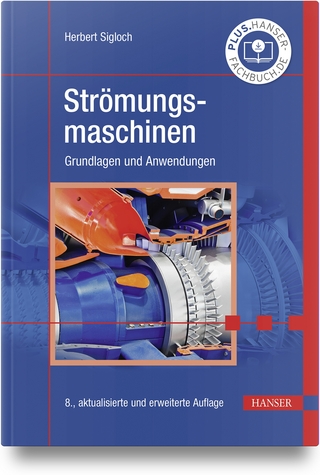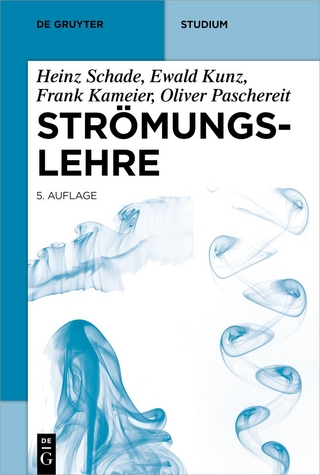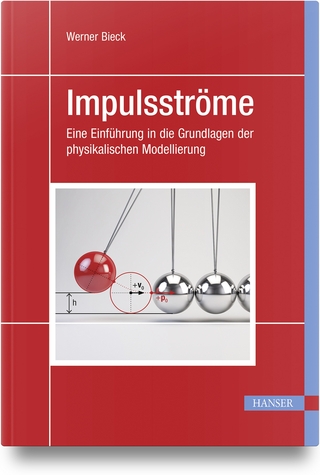
Microhydrodynamics
Butterworth-Heinemann Ltd (Verlag)
978-0-7506-9173-4 (ISBN)
- Titel ist leider vergriffen;
keine Neuauflage - Artikel merken
PrefaceOrganization SchemeI Governing Equations and Fundamental Theorems 1 Microhydrodynamic Phenomena 1.1 Objective and Scope 1.2 The Governing Equations 1.3 Colloidal Forces on Particles 2 General Properties and Fundamental Theorems 2.1 Introduction 2.2 Energy Dissipation Theorems 2.3 Lorentz Reciprocal Theorem 2.4 Integral Representations 2.5 The Multipole Expansion Exercises ReferencesII Dynamics of a Single Particle 3 The Disturbance Field of a Single Particle in a Steady Flow 3.1 Introduction 3.2 The Far Field Expansion: Rigid Particles and Drops 3.3 Singularity Solutions 3.4 Slender Body Theory 3.5 Faxen Laws Exercises 4 Solutions in Spherical Coordinates 4.1 Introduction 4.2 Lamb's General Solution 4.3 The Adjoint Method 4.4 An Orthonormal Basis for Stokes Flow 4.5 The Stokes Streamfunction Exercises 5 Resistance and Mobility Relations 5.1 Introduction 5.2 The Resistance Tensor 5.3 The Mobility Tensor 5.4 Relations between the Resistance and Mobility Tensors 5.5 Axisymmetric Particles 5.6 Rheology of a Dilute Suspension of Spheroids 5.7 Electrophoresis Exercises 6 Transient Stokes Flows 6.1 Time Scales 6.2 The Fundamental Solution 6.3 Reciprocal Theorem and Applications 6.4 The Low-Frequency Limit Exercises ReferencesIII Hydrodynamic Interactions 7 General Formulation of Resistance and Mobility Relations 7.1 Introduction 7.2 Resistance and Mobility Relations Exercises 8 Particles Widely Separated: The Method of Reflections 8.1 The Far Field 8.2 Resistance Problems 8.3 Mobility Problems 8.4 Renormalization Theory 8.5 Multipole Expansions for Two Spheres 8.6 Electrophoresis of Particles with Thin Double Layers Exercises 9 Particles Near Contact 9.1 Overview 9.2 Shearing Motions of Rigid Surfaces 9.3 Squeezing Motions of Rigid Surfaces 9.4 Squeezing Flow between Viscous Drops 9.5 Shearing Flow between Viscous Drops Exercises 10 Interactions between Large and Small Particles 10.1 Multiple Length Scales 10.2 Image System for the Stokeslet Near a Rigid Sphere 10.3 Image Systems for Stokes Dipoles 10.4 Image System for the Degenerate Stokes Quadrupole 10.5 Hydrodynamic Interactions between Large and Small Spheres 10.5.1 Mobility Functions x12 and x22a 10.5.2 Mobility Functions x11 and x21a 10.6 Hydrodynamic Interactions between Large and Small Drops Exercises 11 The Complete Set of Resistance and Mobility Functions for Two Rigid Spheres 11.1 Regimes of Interaction 11.2 Examples of the Usage of Resistance and Mobility Functions 11.3 Tables of the Resistance and Mobility Functions 12 Particle-Wall Interactions 12.1 The Lorentz Image 12.2 Stokeslet Near a Rigid Wall 12.3 A Drop Near a Fluid-Fluid Interface Exercises 13 Boundary-Multipole Collocation 13.1 Introduction 13.2 Two-Sphere Problems 13.3 Error Analysis for Spheres 13.4 Error Analysis for Spheroids Exercises References IV Foundations of Parallel Computational Microhydrodynamics 14 The Boundary Integral Equations for Stokes Flow 14.1 The Setting for Computational Microhydrodynamics 14.2 Integral Operators and Integral Equations 14.3 Notation and Definitions 14.4 The Boundary Integral Equation in the Primary Variables 14.5 On Solving Problems with Velocity BCs Exercises 15 Odqvist's Approach for a Single Particle Surface 15.1 Smoothness of the Boundary Surfaces 15.2 Single and Double Layer Potentials, and Some of Their Properties 15.3 Results for a Single Closed Surface 15.4 The Completion Method of Power and Miranda for a Single Particle Exercises 16 Multiparticle Problems in Bounded and Unbounded Domains 16.1 The Double Layer on Multiple Surfaces 16.2 The Lyapunov-Smooth Container 16.3 The Canonical Equations 16.4 RBM-Tractions from the Riesz Representation Theorem 16.5 The Stresslet Exercises 17 Iterative Solutions for Mobility Problems 17.1 Conditions for Successful Direct Iteration 17.2 The Spectrum of the Double Layer Operator 17.3 Wielandt's Deflation 17.4 Deflation for a Single Particle 17.5 Deflation for a Container 17.6 Multiparticle Problems in Bounded and Unbounded Domains 17.7 Iterative Solution of the Tractions for a Mobility Problem Exercises 18 Fourier Analysis for Axisymmetric Boundaries 18.1 How the Components Separate in Wave-number 18.2 Another Symmetry Argument for the Fourier Decomposition 18.3 Analytical Fourier Decomposition of the Kernel with Toroidals 18.4 Numerical Computation of the Toroidal Functions 18.5 The Numerical Solution Procedure 18.6 Axial Torque as an Example 18.7 Transverse Force and Torque 18.8 Other Details of Implementation 18.9 Limitations of the Fourier Analysis Approach 18.10 Results from the Axisymmetric Codes 18.11 Possibilities for Improvement and Generalization Exercises 19 Three-Dimensional Numerical Results 19.1 Discretization with Constant Elements 19.2 Resistance and Mobility of Spheres 19.3 Sedimentation of Platonic Solids 19.4 Benchmarks 19.5 CDL-BIEM and Parallel Processing 19.6 Reducing Communication between Processors Exercises References Notation Index
| Erscheint lt. Verlag | 22.2.1991 |
|---|---|
| Verlagsort | Oxford |
| Sprache | englisch |
| Gewicht | 450 g |
| Themenwelt | Naturwissenschaften ► Physik / Astronomie ► Strömungsmechanik |
| Technik ► Maschinenbau | |
| ISBN-10 | 0-7506-9173-5 / 0750691735 |
| ISBN-13 | 978-0-7506-9173-4 / 9780750691734 |
| Zustand | Neuware |
| Haben Sie eine Frage zum Produkt? |
aus dem Bereich


